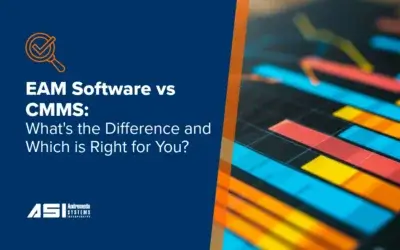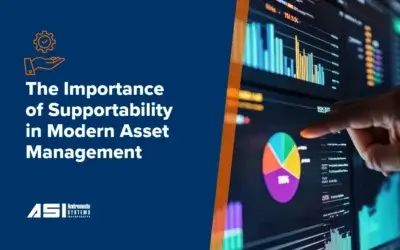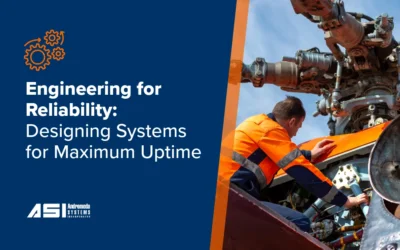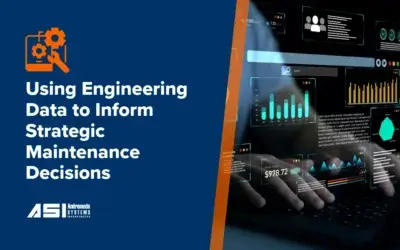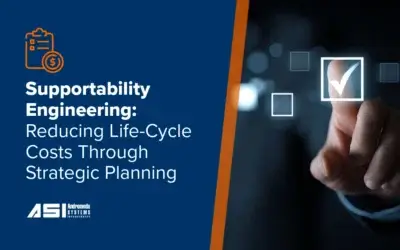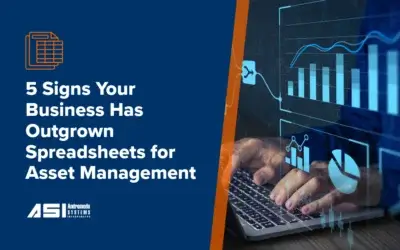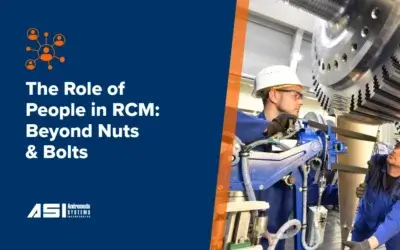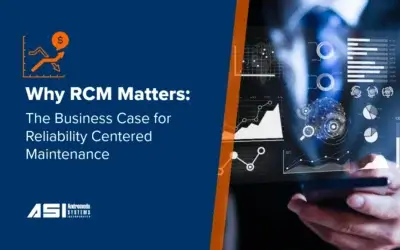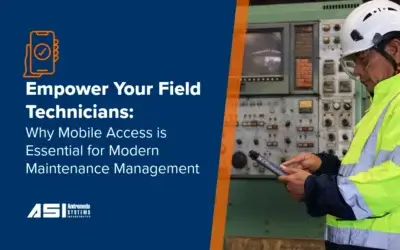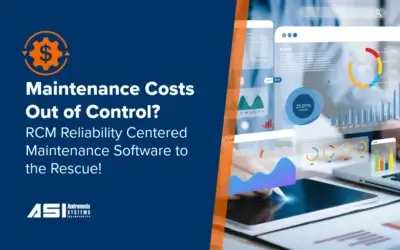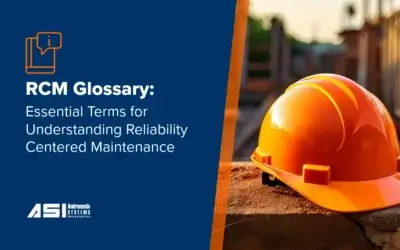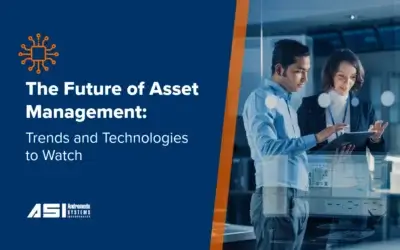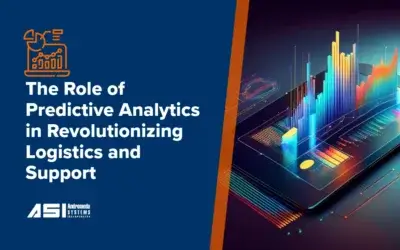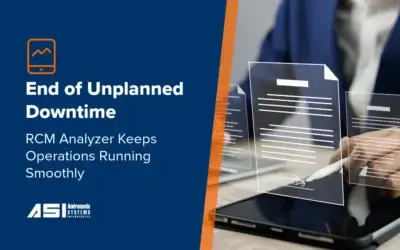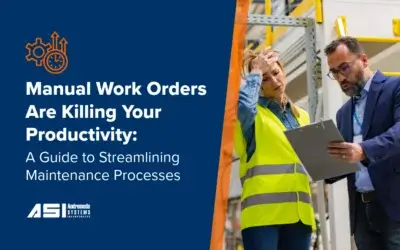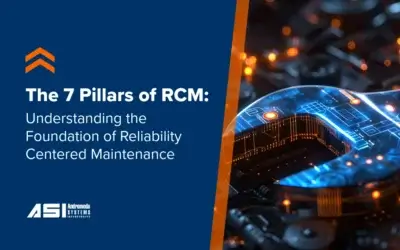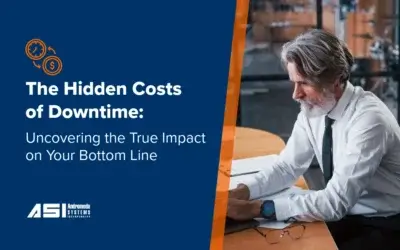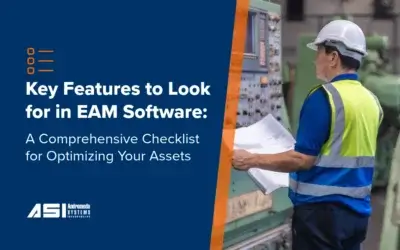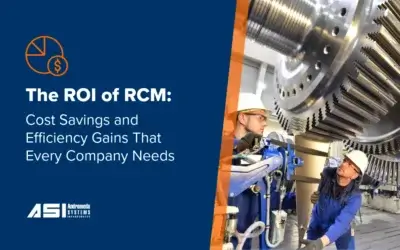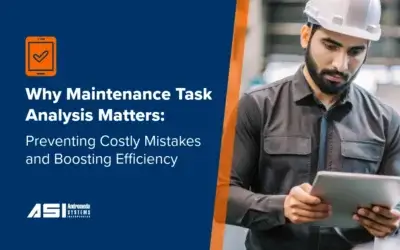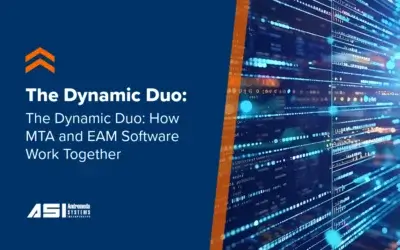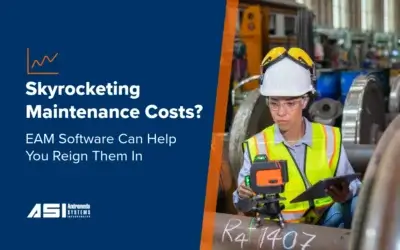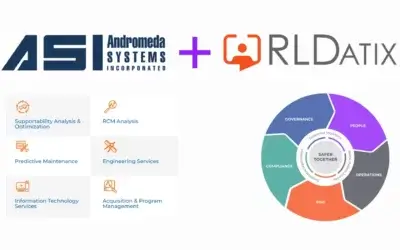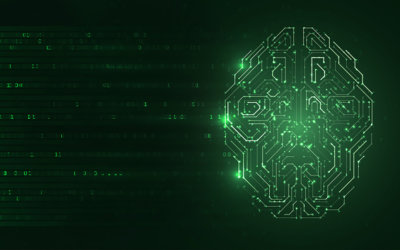Supportability Insights: Future of Tech Blog
Trends and Resources in Reliability Maintenance and LogisticsEAM Software vs CMMS: What’s the Difference and Which is Right for You?
Choosing the right tools is essential for enhancing operational efficiency and prolonging the lifespan of your assets. Enterprise Asset Management (EAM) software and Computerized Maintenance Management Systems (CMMS) are widely used in asset-intensive industries....
The Importance of Supportability in Modern Asset Management
What Is Supportability? Supportability refers to an asset's ability to be maintained and supported throughout its entire life cycle. This includes access to spare parts, trained personnel, maintenance processes, and technical documentation. Strong supportability...
The Ultimate Guide to Choosing the Right EAM Software for Your Company
Enterprise Asset Management (EAM) software enables companies to manage the lifecycle of their physical assets. This includes planning, maintaining, and analyzing equipment to support better decisions and extend asset life. Selecting the right EAM software can enhance...
Reliability Engineering: Designing Systems for Maximum Uptime
Keeping systems running without unexpected interruptions is essential for businesses that rely on physical assets. Whether it’s in aviation, defense, manufacturing, or transportation, downtime leads to lost productivity, increased costs, and lower customer...
Using Engineering Data to Inform Strategic Maintenance Decisions
Thoughtful maintenance planning is key to boosting performance and cutting costs in competitive industries. Engineering data plays a central role in this process, providing clear insights into how equipment runs and where improvements can be made. Let's discuss how...
Supportability Engineering: Reducing Life-Cycle Costs Through Strategic Planning
Supportability engineering plays a critical role in efficient systems management from inception to retirement. Supportability engineering employs the procedures and methodologies of supportability analysis to accomplish the planning, development, systems engineering,...
5 Signs Your Business Has Outgrown Spreadsheets for Asset Management
Efficient asset management is essential for maintaining a competitive edge and ensuring operational success in any growing business. While spreadsheets are initially adequate for tracking assets, they often become less effective as a company expands. This shift...
The Role of People in RCM: Beyond Nuts and Bolts
RCM is not simply an analytical process; it's a collaborative effort that involves everyone from technicians on the shop floor to managers in the boardroom. Each individual plays a vital role in ensuring that assets perform reliably and efficiently. Technicians, armed...
Why RCM Matters: The Business Case for Reliability Centered Maintenance
In the world of asset-intensive industries, unplanned downtime is a nightmare. A sudden equipment breakdown can trigger a cascade of consequences: production grinds to a halt, repair costs skyrocket, and customer orders are delayed. Reactive maintenance strategies,...
Empower Your Field Technicians: Why Mobile Access is Essential for Modern Maintenance Management
Imagine a scenario where a field technician receives an urgent work order. They rush back to the office to gather the necessary paperwork, equipment manuals, and asset history. Precious time is lost in transit, and by the time they reach the job site, the issue may...
Maintenance Costs Out of Control? RCM Reliability Centered Maintenance Software to the Rescue!
Businesses across industries often struggle with escalating maintenance costs, which can drain budgets and reduce operational efficiency. Reliability-centered Maintenance (RCM) software offers a strategic solution that can effectively tackle these challenges. What is...
RCM Glossary: Essential Terms for Understanding Reliability Centered Maintenance
Reliability Centered Maintenance (RCM) is a powerful approach to asset management, but it comes with its own set of terminology. If you're new to RCM or looking to refresh your understanding, this glossary will help you navigate the key terms and concepts. Let's dive...
The Future of Asset Management: Trends and Technologies to Watch
Asset management has always been crucial for businesses, but in today's rapidly changing technological landscape, staying ahead requires more than just traditional practices. The convergence of cutting-edge technologies like artificial intelligence, the Internet of...
The Role of Predictive Analytics in Revolutionizing Logistics and Support
Predictive analytics significantly transforms the logistics and support industry by enhancing efficiency, reducing costs, and improving service quality. This advanced technology leverages historical data, statistical algorithms, and machine learning to anticipate...
The End of Unplanned Downtime: How Andromeda’s RCM Analyzer Keeps Your Operations Running Smoothly
In the fast-paced world of modern industry, unplanned downtime is more than just an inconvenience—it's a threat to your bottom line, your reputation, and even your safety. Whether you're in manufacturing, energy, transportation, or any sector reliant on complex...
Manual Work Orders Are Killing Your Productivity: A Guide to Streamlining Maintenance Processes
Picture this: a maintenance technician frantically sifts through a stack of paper work orders, trying to decipher scribbled handwriting and incomplete instructions. Meanwhile, a critical piece of equipment sits idle, awaiting repair. This chaotic scene is all too...
The 7 Pillars of RCM: Understanding the Foundation of Reliability Centered Maintenance
Reliability Centered Maintenance (RCM) is a powerful approach to asset management that focuses on preserving system function rather than simply preventing equipment failures. At its core, RCM is built on seven key principles, often referred to as the "7 Pillars of...
The Hidden Costs of Downtime: Uncovering the True Impact on Your Bottom Line
In the fast-paced world of manufacturing and asset-intensive industries, downtime is more than just an inconvenience. It's a silent profit-eater, a productivity killer, and a potential threat to your company's reputation. While the immediate costs of repair and...
Key Features to Look for in EAM Software: A Comprehensive Checklist for Optimizing Your Assets
Managing your company's valuable assets is no easy feat. It requires careful planning, organization, and execution to ensure optimal performance, minimize downtime, and control costs. Unfortunately, many businesses still rely on outdated methods like spreadsheets and...
The ROI of RCM: Cost Savings and Efficiency Gains That Every Company Needs
In the world of business, the bottom line is king. Every decision, every investment, is scrutinized for its potential to maximize profits and minimize costs - all while maintaining or improving performance. This is especially true when it comes to maintenance—a...
Why Maintenance Task Analysis Matters: Preventing Costly Mistakes and Boosting Efficiency
Equipment breakdowns, unplanned downtime, and safety hazards can wreak havoc on productivity, profitability, and even your company's reputation. A robust Maintenance Task Analysis (MTA) strategy acts as a shield against these threats, ensuring that your maintenance...
The Dynamic Duo: How MTA and EAM Software Work Together
Effective maintenance is critical to ensure equipment reliability, minimize downtime, and optimize productivity. Two powerful tools that can significantly enhance your maintenance strategy are Maintenance Task Analysis (MTA) and Enterprise Asset Management (EAM)...
What is EAM Software and Why Your Business Needs It
In today's fast-paced business landscape, managing your company's assets efficiently is crucial for success. Whether you're in manufacturing, healthcare, energy, or any other industry that relies on physical assets, you need a solution that can help you streamline...
Skyrocketing Maintenance Costs? EAM Software Can Help You Reign Them In
Is your business feeling the pinch of escalating maintenance costs? Unexpected equipment breakdowns, delayed repairs, and spiraling expenses can quickly drain your resources and disrupt operations. If you're constantly putting out fires and struggling to keep your...
Revolutionizing Asset Management: The IoT Impact
In an era defined by technological advancements, the Internet of Things (IoT) has emerged as a groundbreaking force that is reshaping industries across the globe. Among its many transformative applications, one that stands out is its profound impact on smart asset...
7 Essential Enterprise Asset Management Tips for Success
In today's rapidly evolving business landscape, effective enterprise asset management (EAM) is crucial for organizations to remain competitive and efficient. EAM involves the systematic management of physical assets throughout their lifecycle, from acquisition to...
The Future of Asset Management and Maintenance: Embracing AI for Enhanced Efficiency and Risk Management
In the dynamic world of asset management and maintenance, the advent of Artificial Intelligence (AI) is reshaping the landscape, offering unparalleled opportunities for efficiency, cost-savings, and effective risk management. Coupled with Software as a Service (SaaS)...
ASI integrates the RLDatix’s Allocate OneView workforce optimization solution into their OptiAM® Enterprise Asset Management platform.
ASI has partnered with RLDatix to utilize their OneView (https://rb.gy/ffnzhw) softwareto provide workforce optimization functionality to its OptiAM® Enterprise Asset Management platform. RLDatix’s Allocate OneView is a web-based software as a service (SaaS) workforce...
Artificial Intelligence Prognostic Steering™ (AIPS)
Artificial intelligence (AI) has now become part of our culture whether we use it on smart phone applications or digital media or purchasing products and services. We employ “apps” to assist in our decision making. Andromeda Systems Inc. (ASI) Innovative New Products...
The Story of “S” Origin of the Supportability Index
Original Design Concept by: Ron Wagner – ASI CTO David Sada - VP RM&SS Dr. Gregory Thompson – INPD Sr. Engineer Re- Engineered by: JC Leverette – ASI COO David Sada – VP RM&S Rob Willis – VP APMS Implemented by: Al Wilkerson & ASI Team Throughout its...

